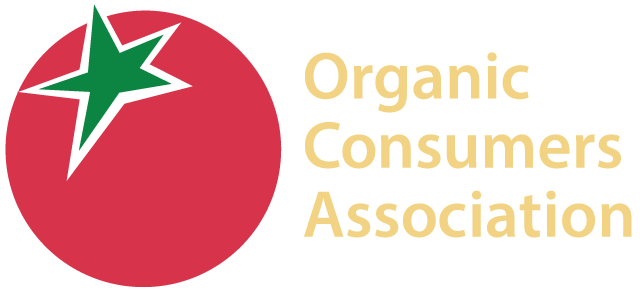Water pollution is a growing problem, and nonorganic farming activities — both on land and in water — are significant contributors. In addition to farming chemicals such as nitrates, which pose a serious threat to water quality, there’s the issue of drug-resistant bacteria. As reported by the Center for Public Integrity,1 water testing in Kewaunee County, Wisconsin, has revealed coliform bacteria “at levels too dangerous to drink.”
Drug-resistant bacteria are a direct result of antibiotic overuse, especially in livestock, and recent investigations reveal antibiotic-resistant genes are being spread across the globe via animal feed — especially feed made from fish meal. Turns out aquaculture, which has been touted as a sustainable alternative to overfishing, is just as environmentally devastating as land-based farms.
The answer to these serious and interconnected dilemmas is to transition over to regenerative and biodynamic farming, both of which go above and beyond organic methods.
We also need to come up with more sustainable solutions for fish, as fish farms are turning out to be no less of an environmental nightmare than land-based factory farms. The recent escape of hundreds of thousands of non-native Atlantic salmon into the Pacific is just the latest testament to the environmental harm aquafarms do.
Drug-Resistant Bacteria Contaminate Many Water Sources
Coliform are bacteria present in the digestive tracts of animals and humans and are a sign of fecal contamination. Casco, Wisconsin, resident Lynda Cochart contracted methicillin-resistant Staphylococcus aureus (MRSA) from her well water, which turned out to be contaminated with MRSA-infected cow manure. Cochart’s home well is situated between two dairy farms that house over 1,000 cows each.
U.S. Department of Agriculture microbiologist Mark Borchardt, who conducted the water testing, told Cochart that “What I found in your well is what I expect to find in a Third World country.”
Not only was she told to stop drinking the water immediately, she was also told to “keep your eyes closed and mouth shut” when showering — hardly a foolproof way to avoid further contamination from MRSA-infested water, considering all it needs to enter your system is a small cut or scrape. Similar contamination problems are occurring all across the U.S. According to the Center for Public Integrity:2
“The News21 analysis shows that the drinking water of millions of Americans living in or near farming communities across the country is contaminated by dangerous amounts of nitrates and coliform bacteria from fertilizer and manure widely used in agriculture. Community water systems serving over 2 million people across the country were cited for excessive nitrate levels.
While the 5,050 nitrate violations can largely be traced back to agricultural activity, the 22,971 total coliform violations could be from either human or animal feces. However, in heavily farmed areas, much of the coliform bacteria can be attributed to manure. Those records don’t cover the millions of private wells that many Americans use, which are left vulnerable to pollution of shallow groundwater in agricultural areas.”
Part of the problem is that farming is exempt from the Clean Water Act. Farms registered as concentrated animal feeding operations (CAFOs) are supposed to be regulated under the Act, but many apparently fail to apply for discharge permits. According to the featured article, between 2011 and 2016 the number of CAFOs increased by 956 to a total of 19,496 in the United States, yet the number of discharge permits held by CAFOs declined by 1,806 in that same five-year period.
Antibiotic-Resistant Bacteria Spread Around the World Via Animal Feed
Manure is not the only source of drug-resistant pathogens. Researchers at Dalian University of Technology in China claim they’ve traced antibiotic-resistant genes to animal feed, specifically fishmeal, meat-and-bone meal and chicken meal.3,4 According to these scientists, fishmeal accelerates the emergence of drug-resistant bacteria and serves as “a vehicle to promote antibiotic-resistant gene dissemination internationally.”5
A large portion of the meal fed to farmed fish settles on the ocean floor, thereby contaminating the sediment and anything that might come in contact with it. Fishmeal is also widely used in other ecosystems. It’s used in livestock feed and as organic fertilizer for example. For these reasons, “the residual fishmeal in related ecosystems deserves more attention with respect to its impact on the bacteria resistome, even in the absence of prophylactic or therapeutic antibiotic use,” the researchers note.
A report commissioned by the British government last year estimates that by 2050, 10 million people may die from drug-resistant infections annually unless we halt the development and spread of these superbugs. That report followed on the heels of the discovery of bacteria resistant to colistin, an antibiotic of last resort. The colistin-resistant bacteria were initially identified in the U.K. in December 2015, and it wasn’t long before the bacteria were found in other parts of Europe, Africa, China and the U.S.6 as well.
For years, researchers have warned that use of antibiotics in agriculture promotes drug resistance, yet American farmers have by and large been reluctant to change what many consider an essential part of raising livestock. However, it’s important to realize that organic and regenerative farms, where animals are raised on pasture, rarely if ever require antibiotics to keep their animals well.
The need for antibiotics rose in tandem with CAFOs, where animals succumb to disease due to overcrowding, unsanitary conditions and a species inappropriate diet.
